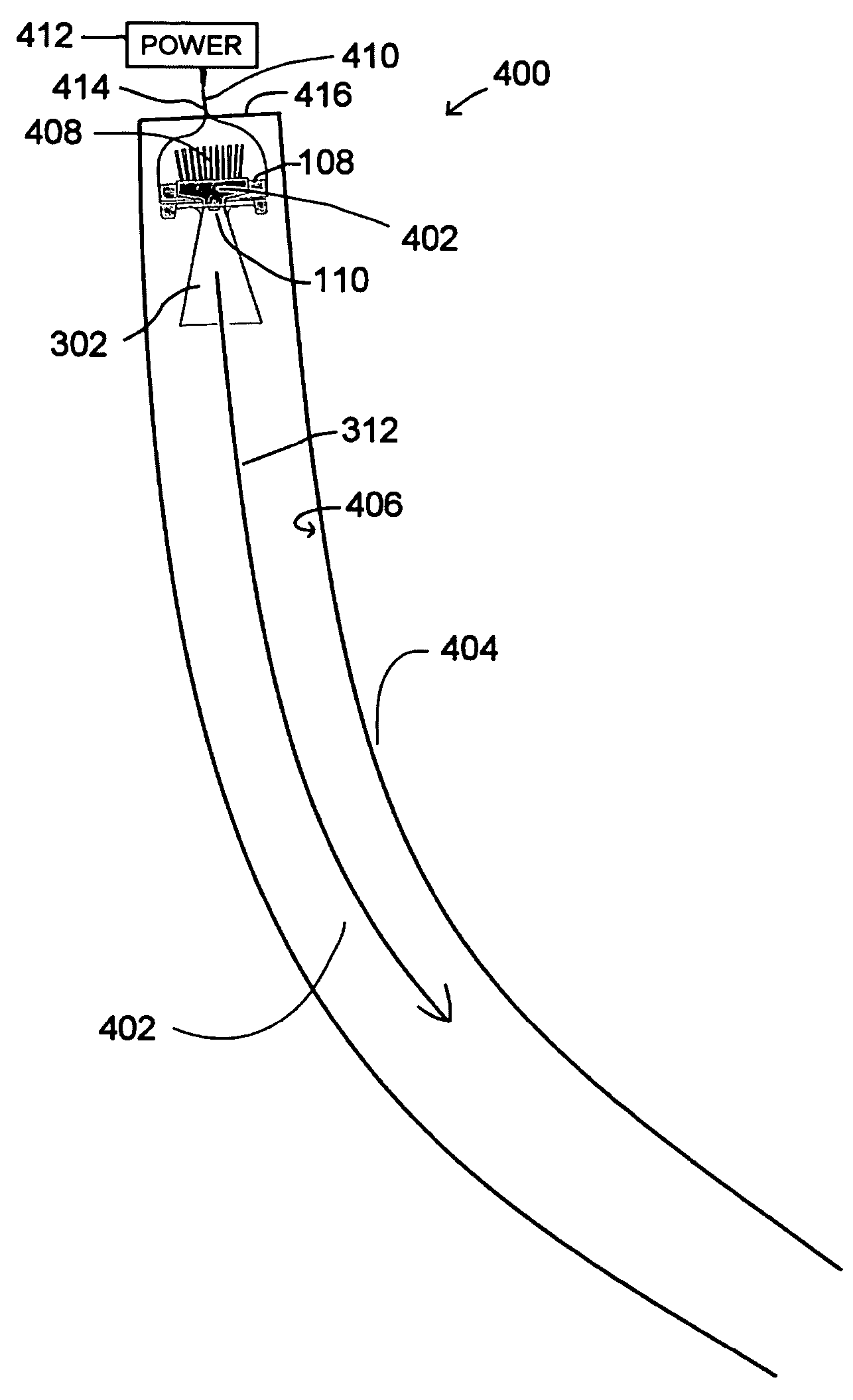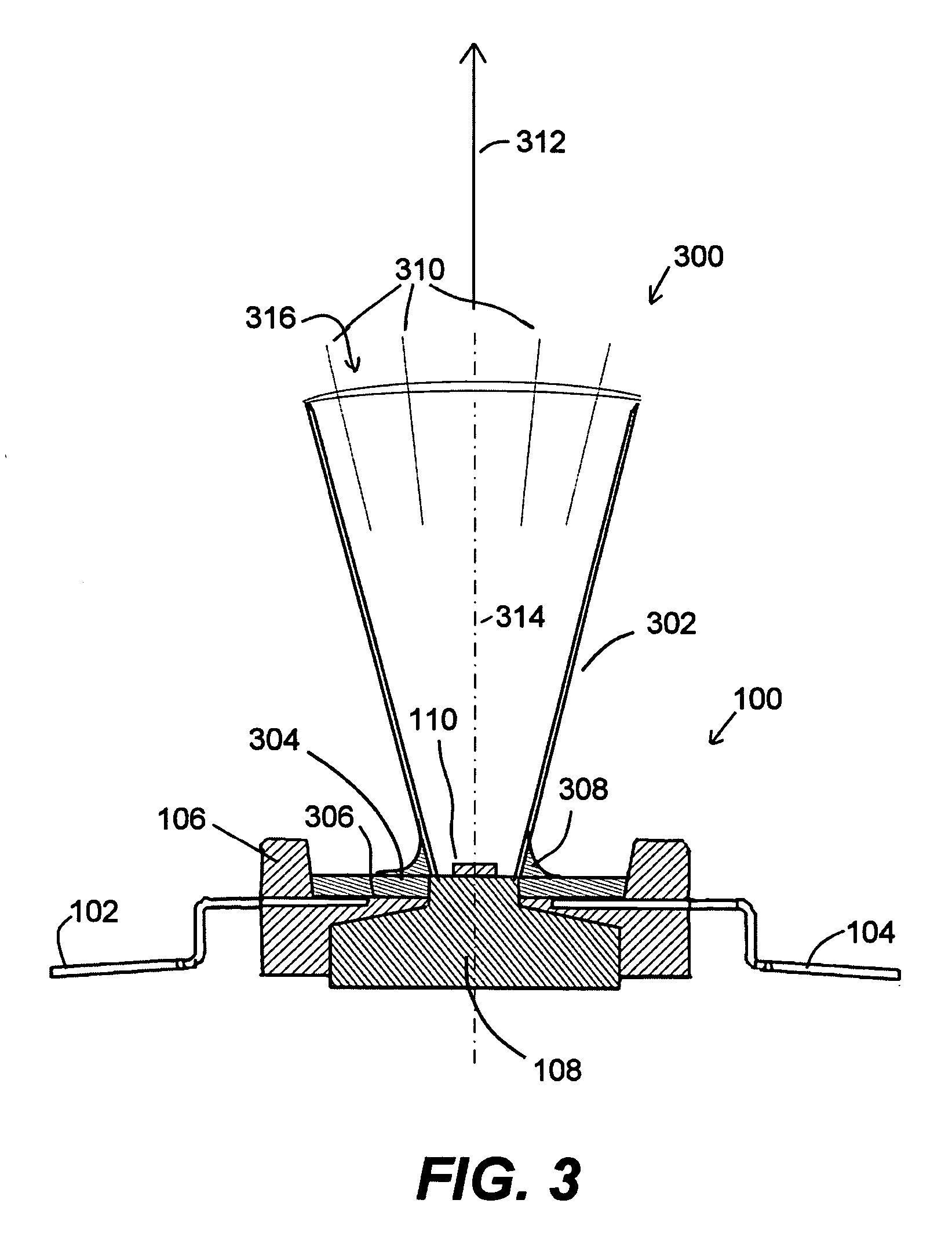Light insertion and dispersion system
a technology of light insertion and dispersion, which is applied in the direction of fibre light guides, instruments, cladding optical fibres, etc., can solve the problems of limited service life of high-voltage power supplies used in neon lighting, extreme high operating voltage of neon lighting technology, etc., and achieve the effect of increasing the life and efficiency of led light sources
- Summary
- Abstract
- Description
- Claims
- Application Information
AI Technical Summary
Benefits of technology
Problems solved by technology
Method used
Image
Examples
Embodiment Construction
[0043] There will now be shown and described a lighting system that operates on the principles of TIR. At a selected system component, which may also be the entire system, a core is impregnated with a light redirecting agent, which causes a portion of light that is being transmitted through the core to impinge upon translucent cladding at an angle above the critical angle for TIR reflectance. Thus, light escapes the core and cladding and may be used, for example, to illuminate a room or a work area.
[0044]FIG. 1 is a front view of a conventional high power LED 100. For clarity, LED 100 is shown without a conventional spherical clear lens assembly that reduces dispersion. As used herein, the term “high power LED” means any LED that is suitable for illumination purposes, and this may include a plurality of LED dies. Power is applied to the high power LED 100 through contacts 102, 104. The high power LED 100 is mounted in a plastic case 106, which is typically made of an acrylic resin....
PUM
 Login to View More
Login to View More Abstract
Description
Claims
Application Information
 Login to View More
Login to View More - R&D
- Intellectual Property
- Life Sciences
- Materials
- Tech Scout
- Unparalleled Data Quality
- Higher Quality Content
- 60% Fewer Hallucinations
Browse by: Latest US Patents, China's latest patents, Technical Efficacy Thesaurus, Application Domain, Technology Topic, Popular Technical Reports.
© 2025 PatSnap. All rights reserved.Legal|Privacy policy|Modern Slavery Act Transparency Statement|Sitemap|About US| Contact US: help@patsnap.com



